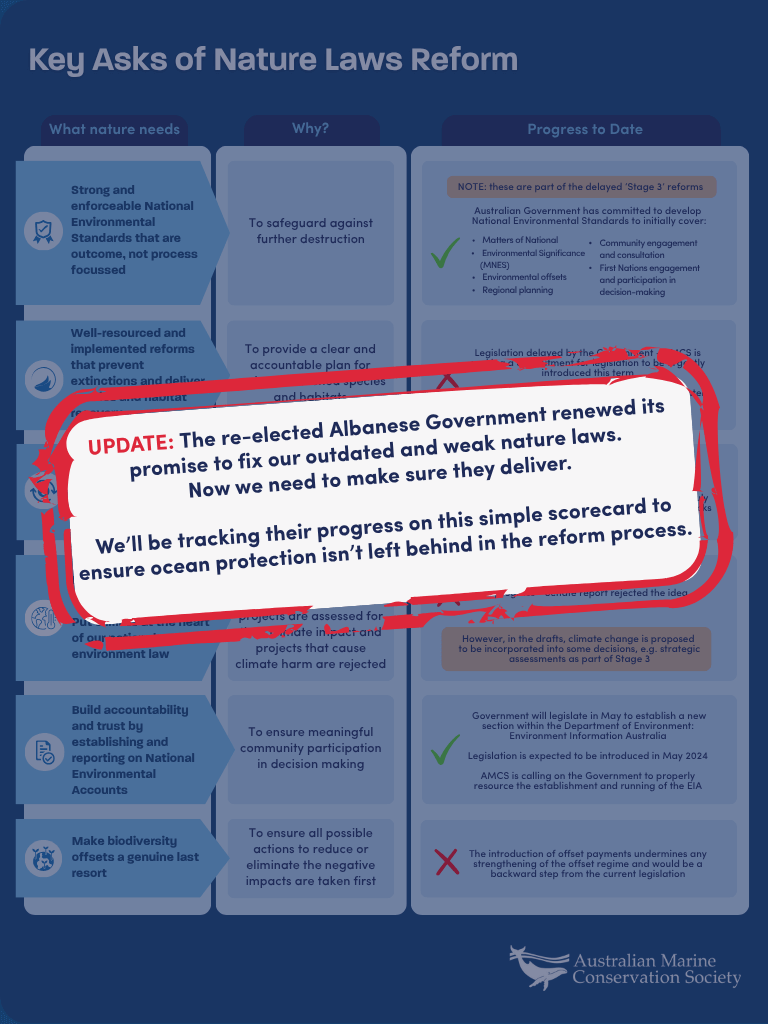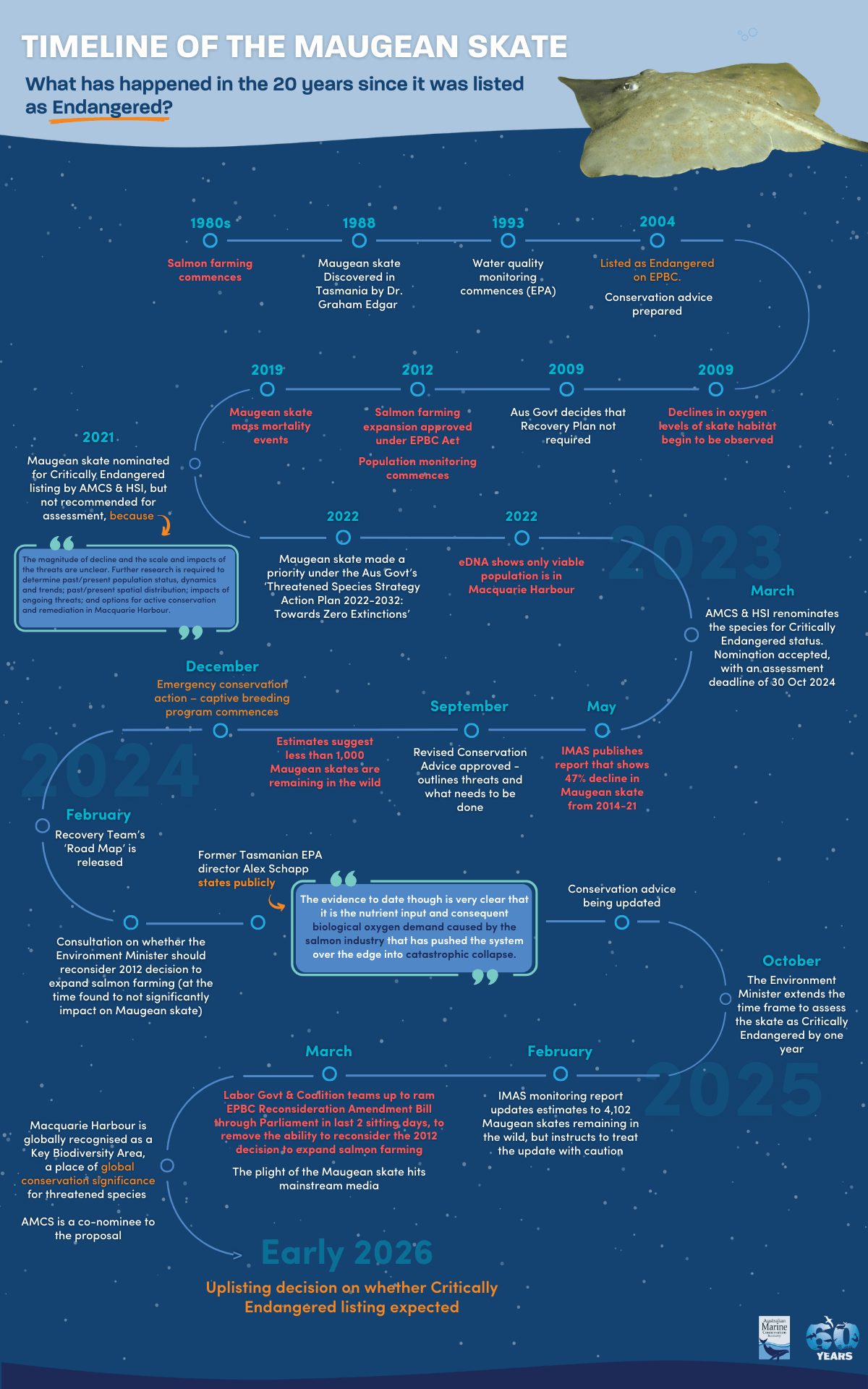Our oceans need a safety net.
Australia’s oceans and wildlife are in crisis. Iconic and irreplaceable species such as the Maugean skate, red handfish and giant kelp, are hanging on by a thread.
The strongest lifeline we can throw them is a set of modern and effective nature laws. Right now, the Environment Protection and Biodiversity Conservation Act (EPBC Act) — our national environment law — is outdated and failing.
The Australian Government has renewed its promise to fix it. Now we need to make sure they deliver.
To help track their progress, we’ve created a simple scorecard. It’s a tool to hold the government accountable — and to ensure ocean protection isn’t left behind in the reform process.
Check it out below and we’ll keep you updated on their progress:
Check out the infographics below to see how the EPBC Act has failed to protect some of our most incredible and vulnerable species:
Red Handfish
The red handfish is one of the rarest and most endangered fish in the world, found in just two small areas near Hobart. With a tiny population of 100 or so left in the wild, it’s crucial we protect this Critically Endangered fish (from pressures such as habitat degradation, pollution, coastal developments and climate impacts).
Giant Kelp
The Giant Kelp Marine Forests of South East Australia are a vital component of our marine ecosystem, providing critical habitats for many species and supporting the health of our oceans. Giant Kelp forests are facing unprecedented threats, and urgent action is needed to protect these vital ecosystems.
Maugean Skate
The Maugean skate is staring down the barrel of extinction, largely due to the failures of the EPBC Act. They are found only in Australian waters, with less than 1,000 estimated to be remaining in the wild. Salmon farming has decimated their habitat, poor water quality is suffocating them, and time is running out.
Featured image credit: Jane Rucker/IMAS



